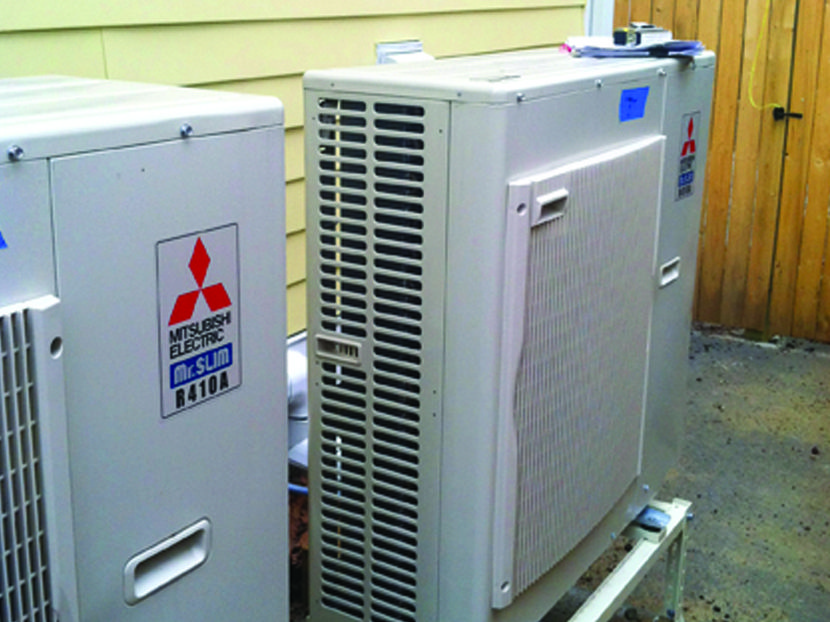Welcome to the Clean Energy Age
Designing zero-energy or near-zero-energy buildings is becoming more mainstream in some areas of the country.

It is perhaps passé to speak as if green or low-energy, low-water buildings are new, novel or experimental. Any perceived remaining debate is well and truly done regarding whether we can build affordable clean energy, fund it, legislate it and even retrofit old buildings with it. Low-energy, zero-energy, energy-positive and passive-house buildings are being built by the thousands across North America.
Several new construction and retrofit upgrade examples are detailed here and are typical among numerous projects. City and state commitments and rules are flying in so fast that it’s difficult to keep up with the news. Clean energy buildings are healthier, less expensive to operate, easier to sell, lease or rent and, increasingly, they’re required. Zero energy or near zero energy is now business as usual.
In no particular order and with apologies to those I’ve missed, cities that have passed regulations or made public commitments containing zero or near-zero energy targets for buildings include Boston: Denver; Georgetown, Texas; Portland, Ore.; Las Vegas; Menlo Park, Calif.; Bloomfield, Iowa; Montpelier, Vt.; New York City; Chicago; Lancaster, Calif.; Toronto; Vancouver, Canada; Fort Collins, Colo.; Burlington, Vt.; Cambridge, Mass.; and Aspen, Colo.
State legislation and policy that leads toward zero energy for all new construction or strong retrofit programs can be found in New Mexico, Texas, California, Florida, Kansas, Oregon, Connecticut, Illinois, New York, Massachusetts, Hawaii, Washington and Maryland. Again, I’m sure I’ve missed some.
Zero Energy House in Seattle
Legend Homes recently completed a 3,160-square-foot home in West Seattle, Wash., which in the modern era might be considered fairly large. Cost of construction was competitive with any new building and energy savings will be well over $100,000 in the coming decades. Before the solar went in, the cost of energy for the home was about $117 per month (average). After the solar installation, this dropped to about $9 per month.
Why so inexpensive? “Because the building envelope is tight enough that it can be heated with air-to-water heat pumps, along with a heat recovery ventilator (HRV) for fresh air,” says Craig Johnson, principal at Legend. “The house has an on-demand water heater as a backup that has never kicked on, plus LED lighting and a 9.9-kilowatt solar PV system.”
Johnson explains that the walls are built using BASF Neopor Structural insulated panels (SIPs), which achieve R-29, along with fiber cement siding, mastic air sealing at all joints and panels and R-30 spray foam on rim joists. SIPs also are used for the roof, achieving R-49. The foundation is slab-on-grade with 4 inches of R-20 EPS under the slab and ICF stem walls yielding R-23 at the perimeter.
The windows are triple-pane, low-E, argon-filled and wood-framed, performing at U=0.14, SHGC=0.35. The home achieves .50 air changes per hour. There’s a radiant heat system in the ground floor slab and some coils in small ducts upstairs.
Local stormwater management is difficult and prohibitive, so the company created a rainwater purification system using ultra-violet carbon filtration that allows the building to be mostly self-sufficient and eliminates the need for stormwater infrastructure. It includes a 10,000-gallon water catchment system. Appliances are Energy Star-certified and plumbing fixtures conserve water.
Legend Homes was founded by Ted Clifton Sr., who started building low-energy homes more than 30 years ago. It is now operated by his son, Ted Clifton Jr., along with Craig Johnson and Thad Johnson. In the past three years, the company has built 18 zero-energy or near-zero-energy homes, including one called the Power House, which has a large enough solar array to power the house plus two electric cars and a hot tub.
Massachusetts Energy-Positive Retrofit
If you are thinking zero energy is less challenging with new construction, or in Seattle’s climate, consider a retrofit project in Somerville, Mass. The Boston-Somerville area is cold in the winter with below-zero temperatures and often more than 40 inches of snow.
The project is called the Davis House and uses a tight envelope, heat pumps, HRVs and an interesting solar set-up. It has both liquid-based solar thermal and photovoltaic (PV) solar for generating electricity. The 12 solar thermal panels are used to prewarm domestic hot water and a radiant system in the basement slab.
They also provide a heat sink for the 56 PV panels, increasing their yield by an estimated 10% as a result,” says architect Franziska Amacher. “Some passive house techniques were used, but at about 1.0 air change per hour, it exceeds that (demanding) standard. Nonetheless it is energy positive, thanks to the tight and thick insulation, a combination of polyisocyanurate panels, spray foam insulation and cellulose insulation.”
The 40-year old structure was completely gutted and in the process reached R-values of 48 for the walls, 60 for the roofs, 23 in the basement and 20 for the basement slab.
Each of the home’s two 1,360 square foot apartments is equipped with three minisplit heads. The six heads are connected to two outdoor Mitsubishi units. Each unit has one HRV, which provides preconditioned air to all rooms and works with booster fans to exhaust bath and kitchen air. Two condensing washer-dryers for laundry do not require exhaust fans.
“Exterior penetrations are minimized,” says Amacher. “It’s a healthy indoor environment with constant fresh air supply for the two families that live there.”
“It’s a healthy indoor environment with constant fresh air supply for the two families who live there,” Amacher notes.
Amacher has been promoting sustainable strategies for a couple of decades and served as the Co-Chair of the Committee on the Environment at the Boston Society of Architects. Her firm, Amacher and Associates, has done “a lot of deep energy retrofits. And we are also creating plans for whole neighborhoods. One of the projects is 50 units plus commercial facilities.”
Vancouver’s Zero-Energy Laneway House
Bryn Davidson has been building small laneway homes as infill housing in the Vancouver area for many years. Although they were already efficient, his company, Lanefab Design-Build, has recently increased energy savings for this type of small home and also added a division that builds larger homes to the passive house standard.
Maybe this sounds familiar: A couple of empty-nesters in a major city want to downsize and rent out their big house to provide added retirement income. The same scenario is happening in many places. In some urban centers, it’s legal to build on the same lot as the larger house (laneway housing), thus eliminating the cost of buying land and at the same time maintaining proximity so they can keep an eye on their rental property.
Lanefab completed a 940-square-foot, one-story project like this, with two bedrooms and two bathrooms. It was constructed quickly using prefabricated Insulspan wall panels and roof components. “The HVAC consists of a low-energy tankless combi unit, feeding an in-floor radiant heat system,” Davidson says. “The wall panels are R-56 and the roof is R-90. It’s tightly sealed and you have to use an HRV for ventilation and exhaust.”
He explains that with both the laneway homes and the larger passive houses his company builds, at perhaps 2,600 square feet, the minuscule heating load is about the same; because the bigger homes are easier to bring to the low air-change standard.
Anyone who knows about construction knows there is some truth in the assertion that “every job is a custom job.” However, whether it’s a 3,000-square-foot new build in Seattle, an apartment retrofit in snowy Massachusetts or a tiny laneway house in Vancouver, we are beginning to see some commonalities in the zero-energy model: super insulated, smaller, often built with prefab panels, well-sealed, heat pumps and HRVs, perhaps some solar (or geothermal) to push it beyond zero.
If we think we can send an astronaut to Mars, I guess we should be able to create a well-sealed, low-energy building.
Guaranteed Energy Savings for City Buildings
In the early 2000s, clean energy zealots received some bad press for over-promising and under-delivering. However, as energy modeling has become increasingly sophisticated and building science has advanced, the business of predicting energy savings has become surprisingly accurate. Lately, a few engineering companies in disparate cities are even willing to guarantee they will deliver the savings or pay the difference.
According to Ashley Brasovan of McKinstry Consulting in Lakewood, guaranteeing energy savings has been business-as-usual for many projects and many years in the state of Colorado.
“We usually underestimate savings a little to make sure, and then save even more energy, time and money for the city than they expected,” Brasovan says. “Our goal is to keep finding new ways to save throughout the life of the equipment.”
Brasovan’s company recently completed an agreement with the city of Lakewood for facility improvements to a community center, the public safety center and two recreation centers. It will save about 1.4 million gallons of water, $123,000 in utility costs and about 906 metric tons of carbon dioxide emissions. The program includes an LED lighting retrofit, pool air circulation upgrades, water conservation measures and improved building controls.
“We create an energy dashboard and work with operators to help them with real-time analytics and system optimization,” Brasovan explains. “We replace or recommission flush valves, add faucet aerators and low-flow showerheads, replace old energy recovery ventilators with new ones that are properly sized, add destratification fans where needed and replace ancient boilers with high-efficiency units.”
The improvements are considered preliminary and the four buildings might be seen as a pilot. “The next steps will involve renewables and, we hope, more facilities,” Brasovan says. “The city manages 150 properties.”
The modern control systems for these four buildings not only support analysis of past energy use but also provide real-time monitoring and alerts if something goes wrong. Sophisticated controls with remote monitoring are, of course, becoming a standard feature for any modern home, including the small laneway houses.
Most engineers, architects, construction managers and contractors are aware of many of the developments described here — but if you are not, it may be time to catch up on some of the ways the industry has changed and is changing. Not only will you avoid being left behind but by helping to lead the way, you can position your organization to take advantage of many of the opportunities available in the clean energy age.





